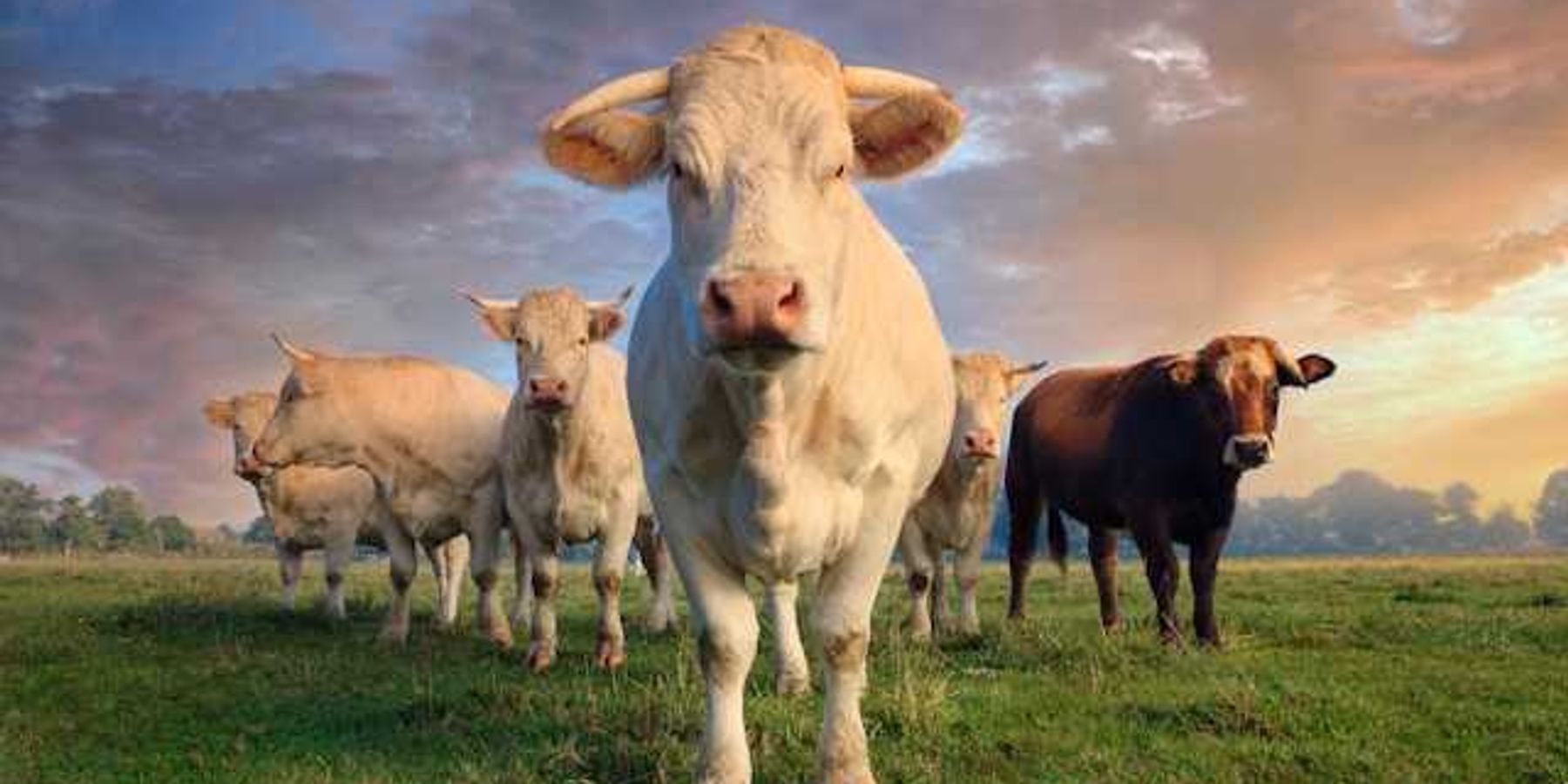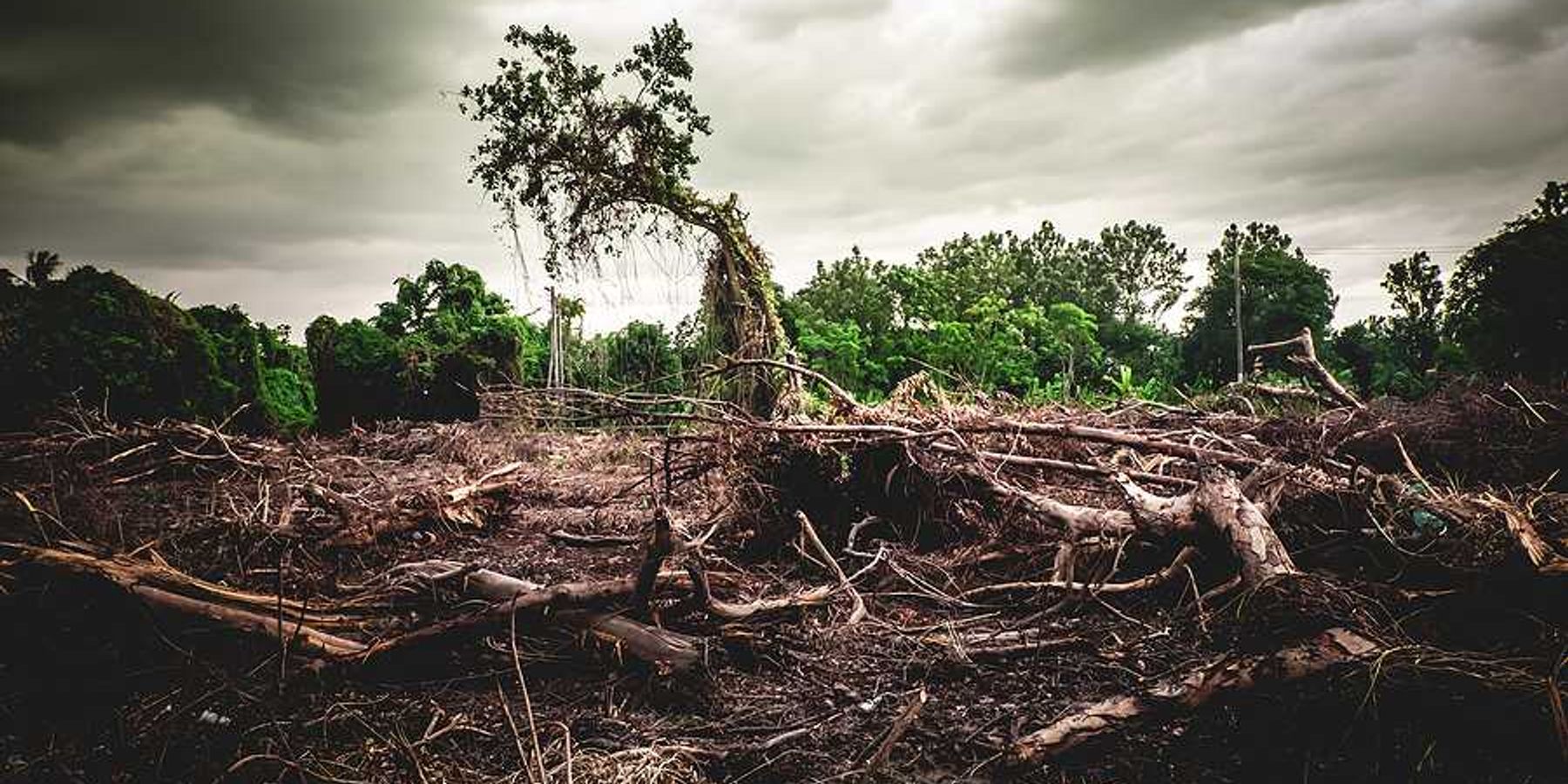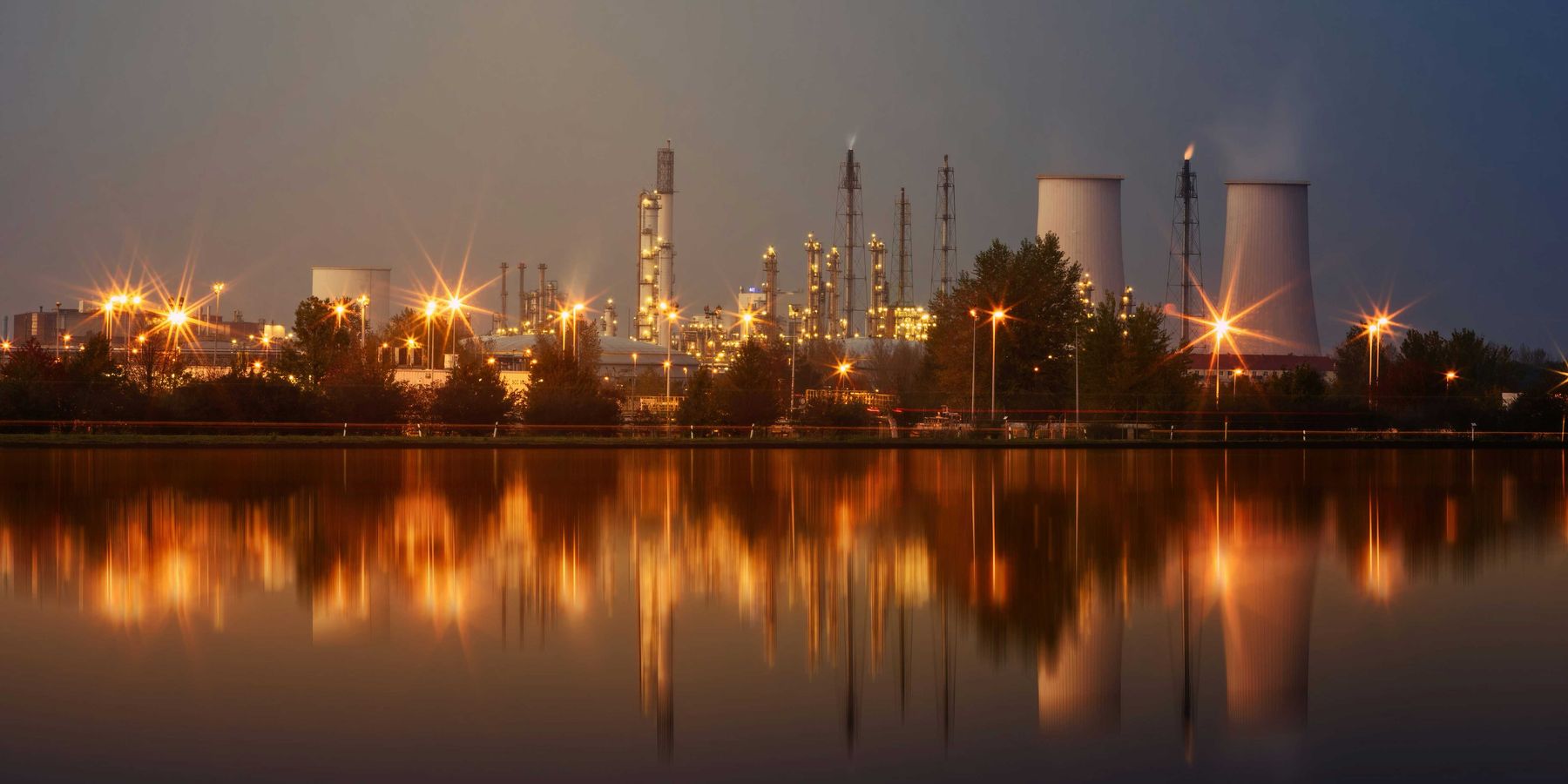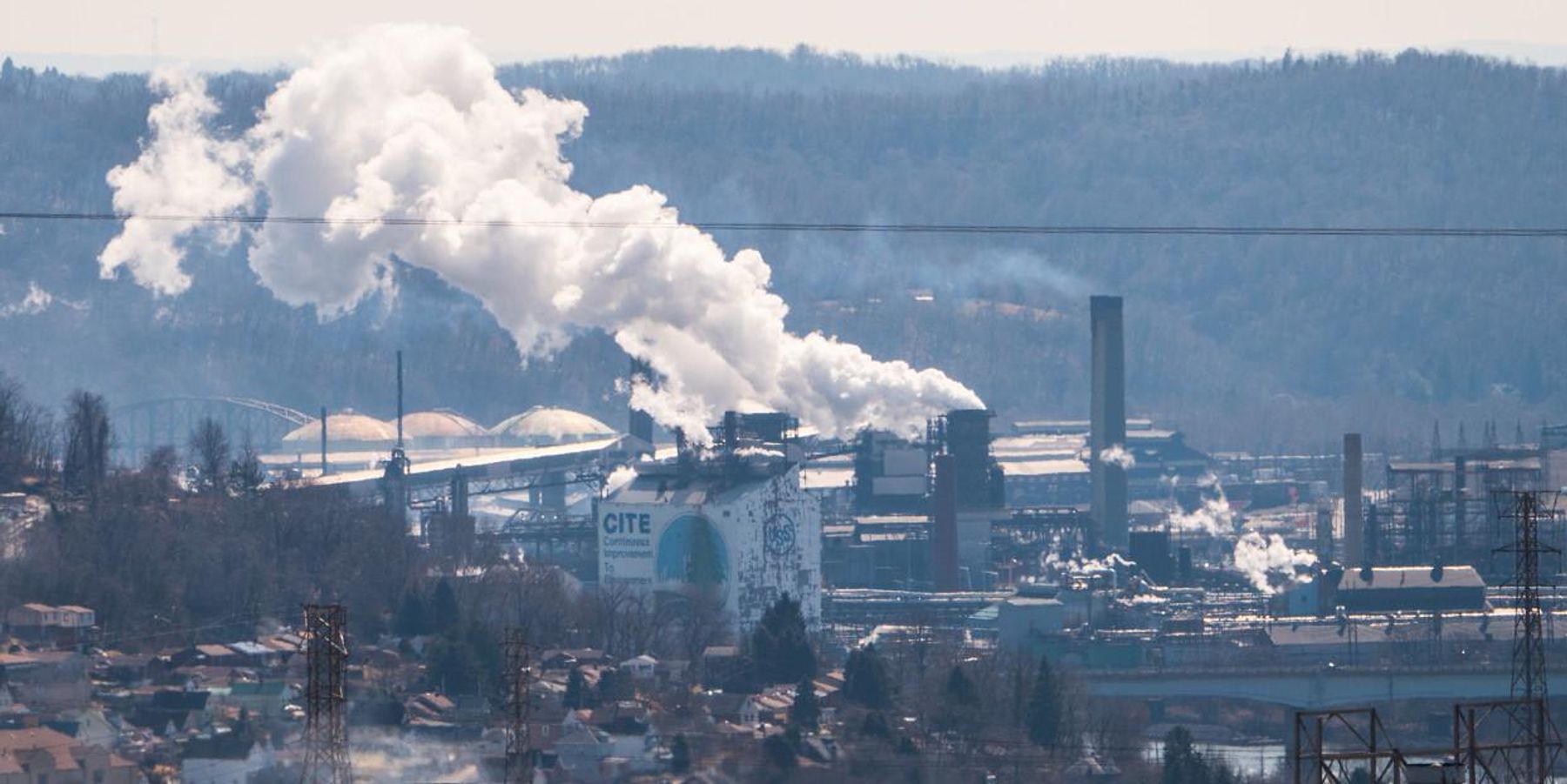
Winter inversions threaten to increase air pollution, COVID-19 risks
"We're now talking about two pandemics. We have a pollution pandemic, and we have the COVID pandemic."
At around 11 AM on November 4, Germaine Patterson stepped outside of her Clairton, Pennsylvania, home to exercise in the backyard. Dirty air sent her quickly retreating back inside.
"I started having heart palpitations," she told EHN. "I know it was due to the air quality."
For seven straight days in early November, air pollution levels in Allegheny County, Pennsylvania, exceeded limits set to protect public health. Unusually warm weather had triggered a hazardous temperature inversion: A low layer of cold air along with other airborne particles near the ground—vehicle exhaust, wood smoke, industrial releases—became trapped beneath a lid of warmer air.
"It was very noticeable to me," said Patterson, who lives about 30 minutes outside of Pittsburgh. Her house is less than a mile from an industrial plant—Clairton Coke Works—that converts coal into coke to manufacture steel. On at least one of those early November days, she recalled waking up in the "wee hours of the morning" to a bad stench. Throat irritation plagued her nearly every day.
Such air inversions, which are a natural weather phenomenon, are most common during winter months when the sun supplies less warmth to the Earth's surface. Valleys and basins are especially prone to inversions, as surrounding hills or mountains can act as walls to block the wind and further lock in cold air and pollutants. With the approaching winter and the lingering—in some cases, spiking—threat of COVID-19, susceptible regions such as Pennsylvania's Mon Valley, Utah's Salt Lake Valley and California's coast-to-mountains basin that includes Los Angeles, may face a double whammy: Studies suggest that poor air quality can worsen COVID-19's toll on the body as well as increase its ability to spread.
"We're now talking about two pandemics," Thomas Muenzel, a cardiologist at Johannes Gutenberg University in Mainz, Germany, told EHN. "We have a pollution pandemic, and we have the COVID pandemic."
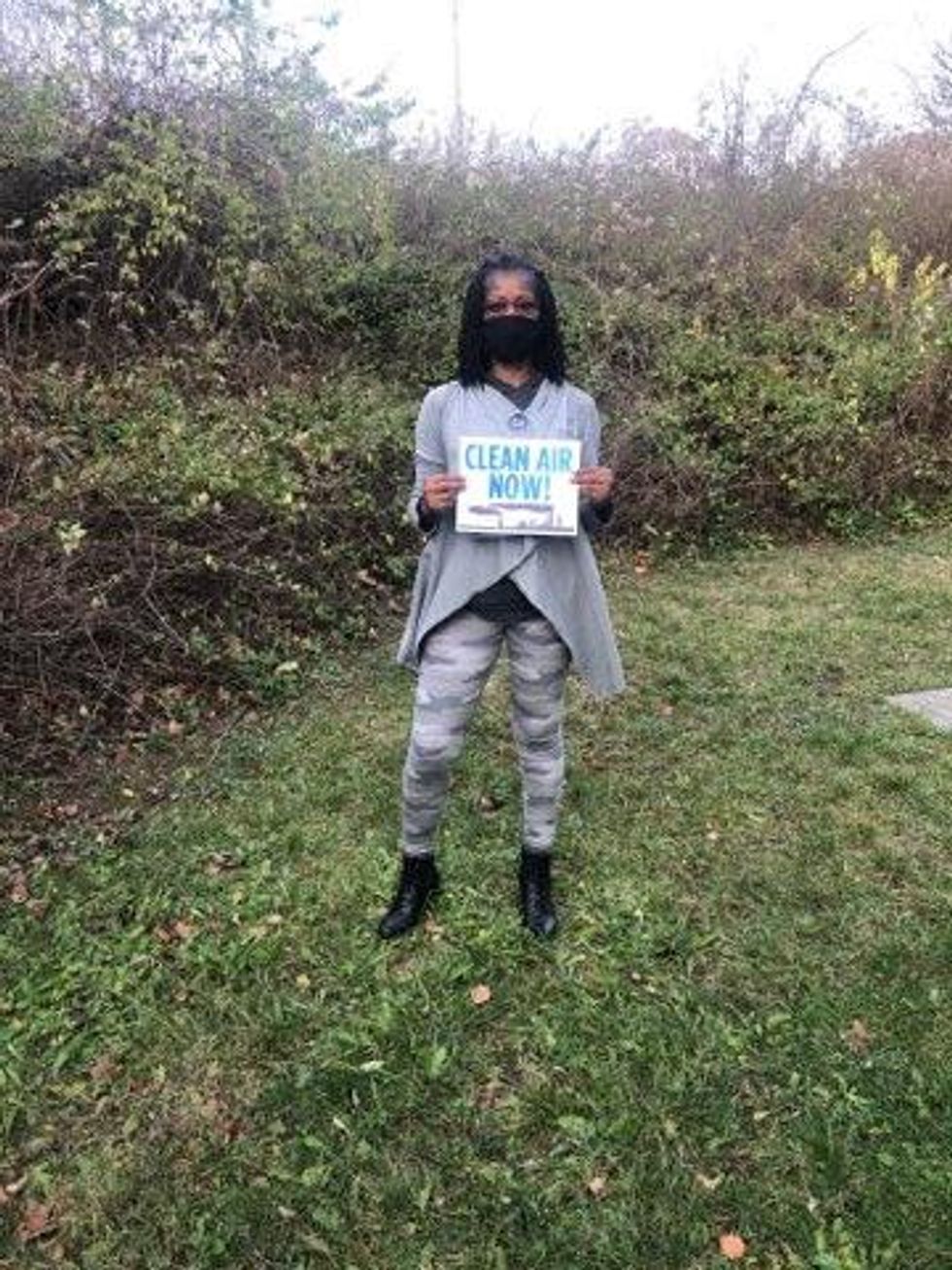
Germaine Patterson in her backyard on November 19, 2020. (Credit: Germaine Patterson)
A deadly combination
As Muenzel explained, both pollution particles and the novel coronavirus target the cardiovascular and respiratory systems in the body, triggering similarly dangerous inflammation and dysfunction. "There are clear signs that air pollution hugely aggravates the outcome of patients infected with COVID-19," he said.
A 2003 paper found that SARS coronavirus 1—a virus that belongs to the same family as the virus that causes COVID-19—patients from moderately polluted regions in China had an 84 percent elevated risk of dying from that virus compared to patients from regions with low levels of air pollution. A study published in November estimated that the COVID-19 death rate increased by 11 percent with an increase in the long-term average concentration of fine particulate matter of one microgram per cubic meter. Overall, approximately 15 percent of global COVID-19 deaths could be attributed to long-term exposure to air pollution, according to another paper published in December. Further studies from around the world appear to support the link.
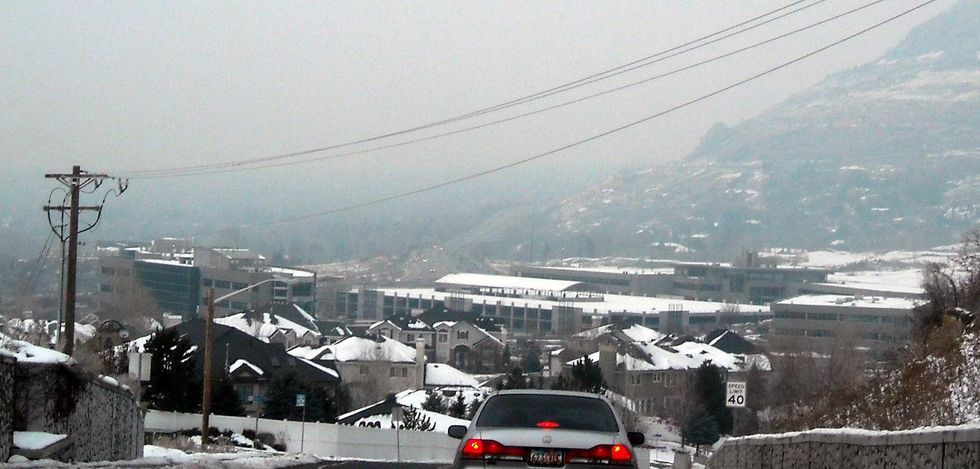
A Salt Lake Valley winter inversion and resulting haze in 2010. (Credit: Garrett/flickr)
"Exposure to air pollution, both acutely and chronically, increases the lethality and severity of COVID infections," Brian Moench, president of Utah Physicians for a Healthy Environment, told EHN. "We can add this pandemic to all the other reasons why air pollution is a serious health hazard." He noted a November study in which researchers estimated that air pollution caused between 2,500 and 8,000 premature deaths per year in Utah.
Air pollution may also facilitate the spread of COVID-19 through a community, he told EHN. Recent studies hint at how the coronavirus may hitch rides on pollution particles. "And when you're talking about really microscopic particles, those things can stay suspended in the air for much longer—and can travel," said Moench. "That is probably one of the reasons why it doesn't appear as though the social distancing dictum of six-feet separation is enough."
Stagnant air during an inversion can rapidly worsen air quality. One study linked winter temperature inversions with an average increase of 40 percent or more in daily fine particulate matter pollution across large areas of the U.S.
Moench noted that most major cities do have worse fine particulate matter levels in the winter—at least in the absence of wildfires—due to inversions preventing pollution from dispersing both vertically and laterally. However, inversions are not a "one-size-fits-all event," he said. If there is snow on the ground, for example, that can decrease the surface temperature and intensify an inversion and resulting build-up of pollution at ground level.
Environmental injustice
Many of the communities that experience poor air quality, such as Clairton and parts of Salt Lake Valley, tend to also be less affluent and have a larger proportion of racial minorities. These same populations face greater risks from the coronavirus due to crowded housing conditions, disproportionate representation in essential work settings, inequitable health care access, and discrimination. Minority groups also have higher rates of certain underlying medical conditions that increase the risk of severe illness from COVID-19 such as asthma, obesity and diabetes. One study found that Black people were twice as likely to catch the virus than White people; another estimated that Black people were more than three times as likely to die from the infection than White people.
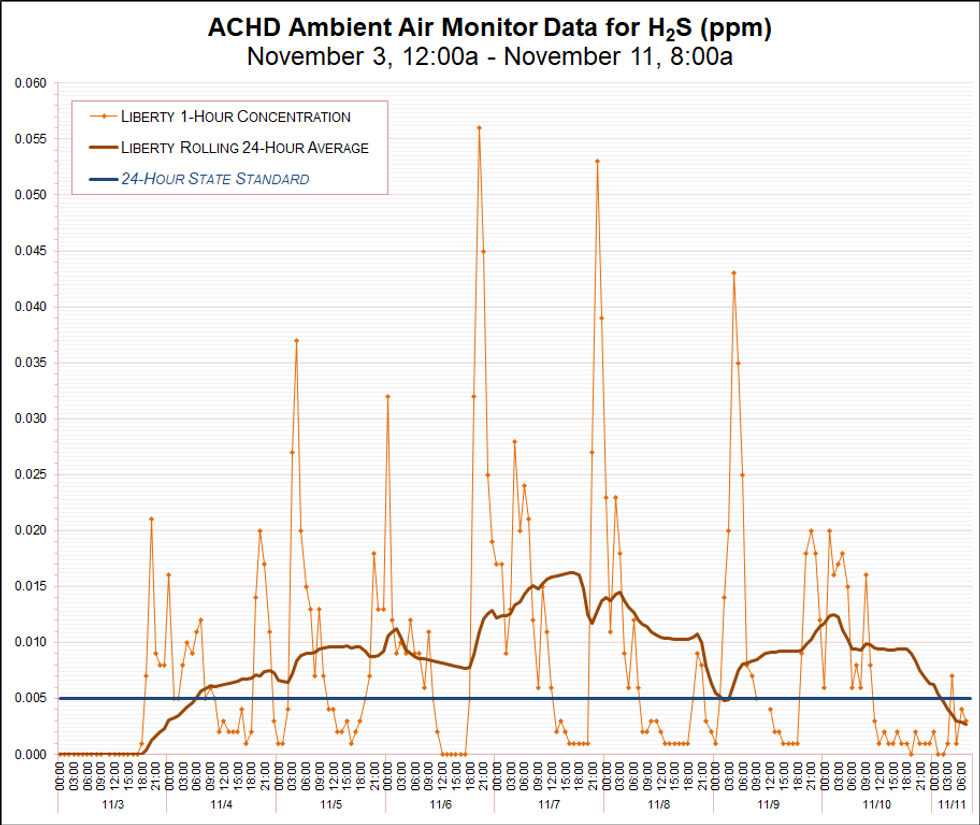
Hydrogen Sulfide spikes in Allegheny County, Pa., on November 3, 2020. (Credit: GASP)
"We're looking at a racial justice, or injustice, issue," said Patterson, adding that her own community lacked accessible COVID-19 testing in the early days of the pandemic.
While current forecasts paint a grim picture for the COVID-19 pandemic in the weeks, and perhaps months, ahead—holiday gatherings, experts warn, are likely to trigger more surges—a pair of promising vaccines could bring welcome relief to millions of Americans this winter.
"The problem is you can vaccinate against COVID, but you can't vaccinate against air pollution," said Muenzel. "So, when the COVID pandemic is finished, we still have the pollution pandemic."
“No one is immune”
Rachel Filippini, executive director of Group Against Smog and Pollution in Pittsburgh, underscored the point. "No one is immune to air pollution. It is not good for any of us," Filippini told EHN. "It is known to affect your respiratory system, cardiovascular system, just about every aspect of your health."
Inversions are also nothing new to vulnerable communities. In late October 1948, for example, an inversion event intensified a deadly smog in Denora, Pennsylvania. And in late December 2019, another warm front triggered an inversion in the Mon Valley, a cluster of townships outside Pittsburgh. Residents endured six days of stinky, polluted air.
Future winters could prove even worse, as research suggests climate change may be increasing both the frequency and severity of inversion events.
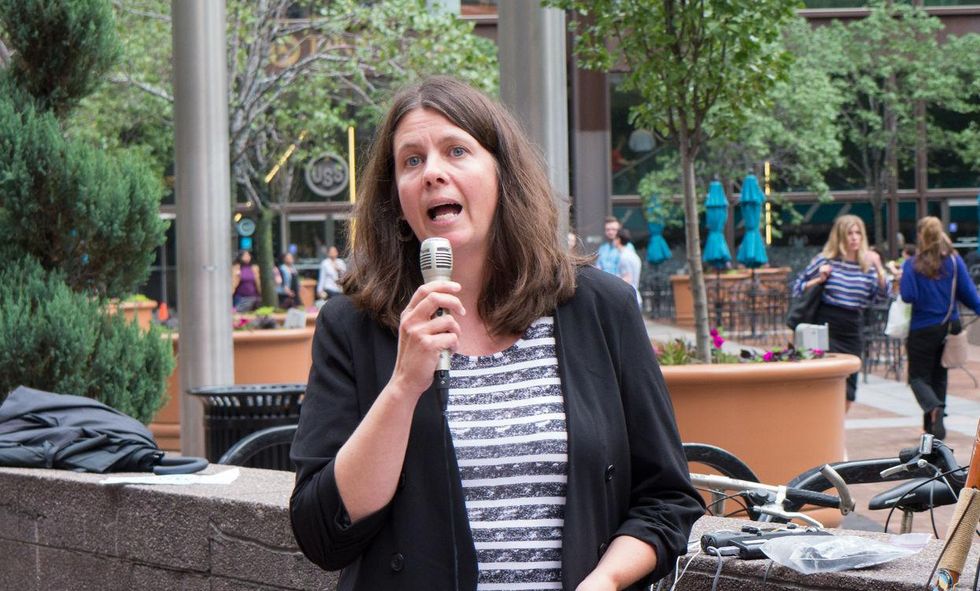
Rachel Filippini at a clean air event on June 20, 2019. (Credit: Mark Dixon/flickr)
Filippini is among advocates growing impatient for greater efforts to improve air quality. She has called out U.S. Steel, which runs several plants in the Pittsburgh area, including the Clairton Coke Works plant. "We know that regulations can take time to be developed and implemented," said Filippini. "So, right now, I think it is imperative that industry, such as U.S. Steel, show its commitment to the public by voluntarily curtailing their emissions during forecasted high pollution days."
In an email to EHN, U.S. Steel spokesperson Meghan Cox noted that the corporation was "already operating at a reduced level" and "made additional adjustments" to operations during the November inversion event.
"There were elevated emissions readings at monitors across the county and throughout the state during this inversion," said Cox. "This suggests region-wide issues such as mobile sources and background levels from other areas are contributing to elevated levels during inversions." She added that U.S. Steel is committed to supporting the county health department's development of "a science-based model to better predict inversions and their intensity."
Muenzel is hopeful COVID-19 has raised public awareness about air pollution. In the early days of the pandemic, as industries shut down and fewer vehicles filled the roads, the resulting cleaner air made international headlines.
"The numbers of patients with myocardial infarctions went down substantially during that first wave of infections," he said, highlighting the link between heart attacks and air pollution. "That's our next challenge: How can we keep air pollution levels down and not endanger our people?"
Banner photo: US Steel suffered a massive fire at its Clairton Coke Works facility. (Credit: Mark Dixon/flickr)


